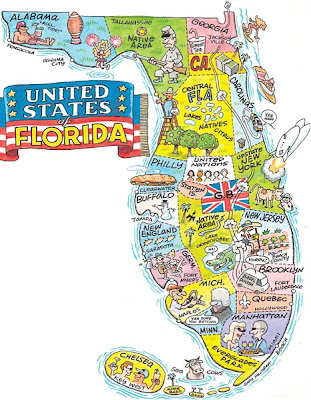
This is a great depiction of a mental map because it demonstrates how people from all over the country and even the world move to Florida. In this mental map the creator illustrates where they believe each region from the US relocates to in the state of Florida. For example in the southwest region they have folks from Michigan, which is usually where many of the snowbirds flee to in order to get away from the weather up north. Miami is where those from Manhattan come down and retire. Central Florida is home to the Brits. I had only added the Disney map, but when I saw this depiction of Florida I had to add this mental map as well.
Original map
This is a mental map of Walt Disney World Resort in Orlando, FL. The map is not drawn to scale, it's just an approximation of the location of each park in the resort. This map is a picture that someone mentally developed in order to demonstrate the location of each park, and the quantities of parks in the 70,000 square acre Disney property. The map points out each water park, Downtown Disney, MGM Studios, Magic Kingdom, and Animal Kingdom. The picture points out each area of entertainment, however all the hotels and resorts surrounding the parks are left out of the mental map. This picture points out that the creator of this map was trying to demonstrate that the most important part of the resort or the part of the resort that the majority of people want to see are the theme parks.
http://disneyworld.disney.go.com/wdw/parks/maps/mappopup?park=WDWMapPage&bhcp=1



















































